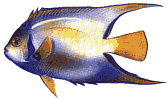

Goals:
2.Ý The students will enhance their poetic backgrounds by writing their own poetry.
Materials:
Fadiman, Clifton. (1984). The World Treasury of Children's Literature. Boston:Ý Little, Brown, and Company.
Index cards with selected words from the poem
Paper
Pencils
Procedure:
2.Ý The teacher will divide the class into two groups.
3.Ý Each group will be in charge of doing the choral speaking for half of the poem. The teacher may wish to assign one group to the first nine lines of the poem, and have the other group do the second nine. Another option is to have the two groups alternate every other line of the poem.
4.Ý Within their groups, the students will rehearse their lines using choral speaking methods. They may wish to experiment reading aloud together using different tones of voice or accenting certain words in the line. The students may also wish to have certain members of the group read a line or two of the poem in a "solo," or they may choose to read all of the lines aloud together. Regardless of which method the students choose, it is important that all students participate equally in the choral speaking experience.
5.Ý After each group has prepared their portion of the poem, the students will read the poem as a class, with each group speaking aloud on their assigned portion of the poem. If the class is not satisfied with the initial reading, the students may wish to suggest ways of improving the choral speaking and try again.
6.Ý Once the group feels comfortable with their choral speaking performance, the teacher may choose to tape record the students.
Procedure:
2.Ý The students will work together in their research teams (from week one).
3.Ý Within their teams, the students will create a poem about the fish or animal that they researched. The poem may be factual, fantasy, or tell a story about the adventures of that particular fish. All poems must be at least ten lines long and all team members must contribute at least two of the lines. It is not necessary that the lines rhyme, however, the poem should be written in a poetic format, rather than in paragraph form.
4.Ý After the team has finished writing their poem, they will discuss amongst themselves how they will present it to the class. The team may wish to present the poem in the form of a skit, or use choral speaking methods to read it aloud. Either way, all team members must contribute to the class presentation.
5.Ý Lastly, all of the teams will present their poetic works to the class.
Assessment:
2.Ý The students will be evaluated by their team members based on contribution and participation in the preparation and presentation of the poem (Criteria for success = each student must contribute at least two lines to the construction of the poem, each student must speak during at least some part of the presentation).
Curricular Strands and Major Concepts:
2.Ý Creative Thought - Preparation and presentation of a poem using creative choral speaking
3.Ý Group Cooperation - Working together to present a creative, yet informative poem about coral reefs
Possible Extensions:
2.Ý The students will create a class poem book of all their poetry, including those poems written using this lesson.
Back to Table of Contents
Coral Reefs - developed by Kristen Treadway, Jenny Mavis, T. J. Beck, & Jim O'Keefe
This page submitted by the St.
Norbert College Ocean Voyager Program
Ý